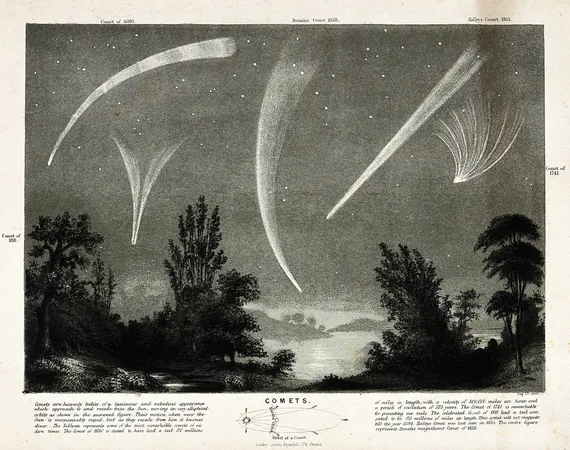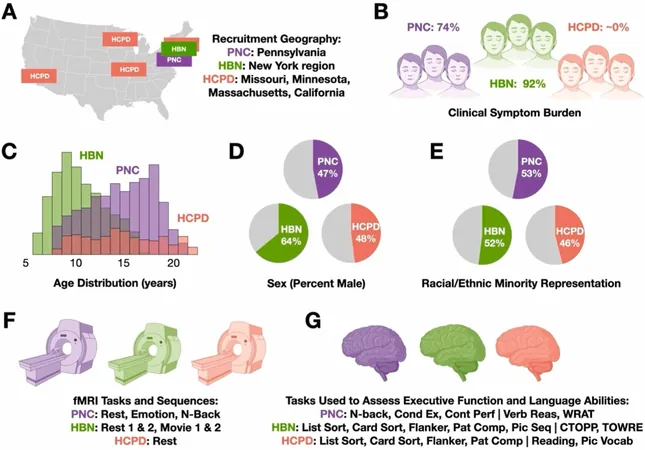
Astronomers Unveil Groundbreaking Method to Track Potentially Hazardous Comets Through Meteor Showers!
2024-10-31
Author: Siti
For centuries, comets have captured the imagination, often viewed as harbingers of change or symbols of impending doom. These celestial wonders emerge as faint specks in our night sky, occasionally brightening to illuminate the heavens with their spectacular trails. Despite being chronicled throughout history, it wasn't until the 18th century that astronomers began to predict their returns. However, the ability to accurately forecast the arrival of most comets remains largely elusive, leaving the planet vulnerable to surprise encounters with these icy visitors from the depths of space.
Comets primarily originate from the mysterious Oort Cloud, a vast spherical shell of icy objects that envelops our solar system, stretching up to 100,000 astronomical units (AU) in distance. Occasionally, these ancient remnants of solar system formation are nudged by other cosmic bodies or the gravitational pull of nearby stars into trajectories that lead them toward the inner solar system. They traverse the sky unpredictably and may take hundreds or even thousands of years to return once near the Sun. Those with a long orbital period—over 200 years—are classified as long-period comets, which present the greatest challenge for prediction.
While most long-period comets pose no immediate danger to Earth, there are certain exceptions that could spell disaster. History serves as a reminder, as we have encountered comets that have threatened our planet. Scientific observations of meteor showers provide invaluable insights into potential risks. Events such as the Geminids, Perseids, and Orionids are traced back to the debris trails left by comets—specifically Comet Phaeton, Swift-Tuttle, and Halley's Comet. Among these, only Swift-Tuttle is classified as a long-period comet, taking a staggering 257 years to complete its orbit.
The connection between meteor showers and their originating comets has been established by tracking the comet's orbital path. However, researchers propose a novel method: starting with the known trajectories of meteor showers to identify the associated long-period comets. With the advent of advanced telescopes, like the Rubin Observatory, this approach could revolutionize our ability to assess potential impact threats from comets.
A recent study published on arXiv outlines this innovative tracking methodology. Researchers conducted simulations of long-period comets with orbital periods ranging from 200 to 4,000 years, estimating the dust trails they would leave behind. The goal was to see if astronomers could trace back from meteor shower paths to the originating comets, even when those comets are far from the Sun and difficult to detect.
The researchers found that while many comet orbits did not produce meteor showers conducive to prediction, there were 17 key cases where showers could potentially reveal hidden comets several months or even years in advance. This predictive capability represents a remarkable leap in our ability to monitor and assess cometary threats.
One compelling example examined in the study is the sigma-Hydrids meteor shower, a relatively faint event occurring in early December. Until recently, the source of the sigma-Hydrids was a mystery, but the emergence of Comet Nishimura in 2023 offered clues. Once the comet's orbit was established, astronomers identified its possible link to the meteor shower. With data from previous observations, the researchers back-calculated a potential orbit for Nishimura. Their findings suggested that a search akin to that of the Rubin Observatory could have led astronomers to discover Nishimura a remarkable eight months before it was officially identified.
As we stand on the brink of a new era in comet tracking and monitoring, the fusion of advanced technology with innovative scientific methods gives us hope. This proactive approach not only enhances our abilities to predict the paths of these celestial objects but also provides an important line of defense against potential Earth-bound threats. The universe is vast and mysterious, but thanks to these groundbreaking efforts, we might be a step closer to safeguarding our planet from the dangers lurking in the cosmic shadows!





 Brasil (PT)
Brasil (PT)
 Canada (EN)
Canada (EN)
 Chile (ES)
Chile (ES)
 España (ES)
España (ES)
 France (FR)
France (FR)
 Hong Kong (EN)
Hong Kong (EN)
 Italia (IT)
Italia (IT)
 日本 (JA)
日本 (JA)
 Magyarország (HU)
Magyarország (HU)
 Norge (NO)
Norge (NO)
 Polska (PL)
Polska (PL)
 Schweiz (DE)
Schweiz (DE)
 Singapore (EN)
Singapore (EN)
 Sverige (SV)
Sverige (SV)
 Suomi (FI)
Suomi (FI)
 Türkiye (TR)
Türkiye (TR)